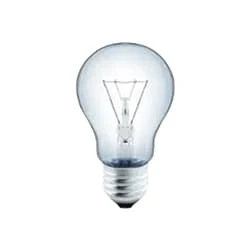Digital Timer Switch Electrical wiring | Wiring Digital Timer
Digital Timer Switch Electrical wiring:
This diagram shows how to connect a digital timer switch to electrical wiring. In this diagram, we just try to describe to you how to connect a digital timer switch very easily. Here we use a simple diagram for sowing the connection. If you want to know more details about this circuit please check our YouTube video below the post.
Diagram of Digital Timer Switch Electrical wiring:
Components Need for this Project:
You can get the components from any of the sites below:
- DP MCB [See Buy Click Amazon]
- Timer [See Buy Click Amazon]
- Switch [See Buy Click Amazon]
- Light [See Buy Click Amazon]
*Please note: These are affiliate links. I may make a commission if you buy the components through these links. I would appreciate your support in this way!
$ads={1}Read Also:
Components used to make the Digital Timer Switch wiring:
01. DP MCB
 |
| Fig 2: DP MCB |
Double pole MCB can control two wires. This circuit breaker is generally used in single-phase electric lines. Double pole MCB circuit breaker input has two wires supply two wires and an output. In a single-phase line, A double-pole MCB circuit breaker is used to give good production. This circuit breaker is provided through phase and neutral circuit breaker, it is very safe. This circuit breaker is preferred for home appliances. A DP MCB usually trips for 2 reasons 1. Overload 2. Short circuit.
02. Timer
 |
| Fig 3: Timer |
Timer is a specialized type of clock used for measuring specific time intervals.An electromechanical cam timer uses a small synchronous AC motor turning a cam against a comb of switch contacts. This type of timer often has a friction clutch between the gear train and the cam, the cam can be turned to reset the time.A simple example of the first type is an hourglass. Working method timers have two main groups: hardware and software timers.Most timers give an indication that the time interval that had been set has expired.
03. Switch
 |
| Fig 4: Switch |
A Single-Pole, Single-Throw (SPST) Switch. It's Got one Output and One Input. The Switch will Either be Closed or Completely Disconnected. SPSTs are Perfect for on-off Switching. They're also a Very Common Form of Momentary Switches. SPST Switches are Commonly Used in a Variety of Electrical Circuits and Applications, Such as Turning on And off Lights, Fans, and Other Appliances. They can Also be Used to Control the Flow of Electricity to Different Parts of a Circuit or to Switch Between Different Circuits Altogether.
04. Light
 |
Fig 5: Light
|
CFLs work in a completely different way from ordinary lamps, they work by using a different process called fluorescence rather than generating light from heat. A typical light bulb wastes 90% of energy and converts only 10% of energy into light, this is where CFL has the biggest advantage. CFL- Curved or conical glass tube filled with argon and a small amount of mercury vapor. The inner wall of the glass is coated with fluorescent material. CFL- It is manufactured using the principle of creating fluorescent light. CFL- Originally white in color but now the construction and use of CFLs producing colored light has become popular.
Thank You for visiting the website. Keep visiting for more Updates.
$ads={2}
Frequently Asked Questions
How does a digital timer switch work?
How do digital timer switches work? They are typically connected to electrical circuits diagram powered via the main supply. The digital timer of the switches features timing circuitry, switching devices, and no moving parts. Such switches could be used to turn lights on and off at times selected by the user.
What is a digital timer?
Description. Digital timers keep track of timing; to trigger an action, to start timing once triggered by an action, or both. Some products are programmable while others may be fixed at a set internal time or function.
What are the advantages of digital timers?
Digital timers are programmable or provide a wider range of options. They have 24-hour and seven-day timers, which allow you to adjust the timing based on your needs. And digital timers can be password-protected for added security.
Which are better mechanical or digital timers?
They both work the same way or can perform the same functions. Mechanical timers tend to be larger, last longer, or can handle more electrical load than a digital timer; however, they also tend to be designed as large, grey, metal boxes, that may stick out quite a bit in your home décor.
How many watts does a digital timer use?
A mechanical timer consumes about 1 Watts per hour. That means 24 Watts per day. A digital timer usually consumes a little bit more power supply. Here, the power consumption is about 2 Watts per hour.






Post a Comment
Do leave your comments